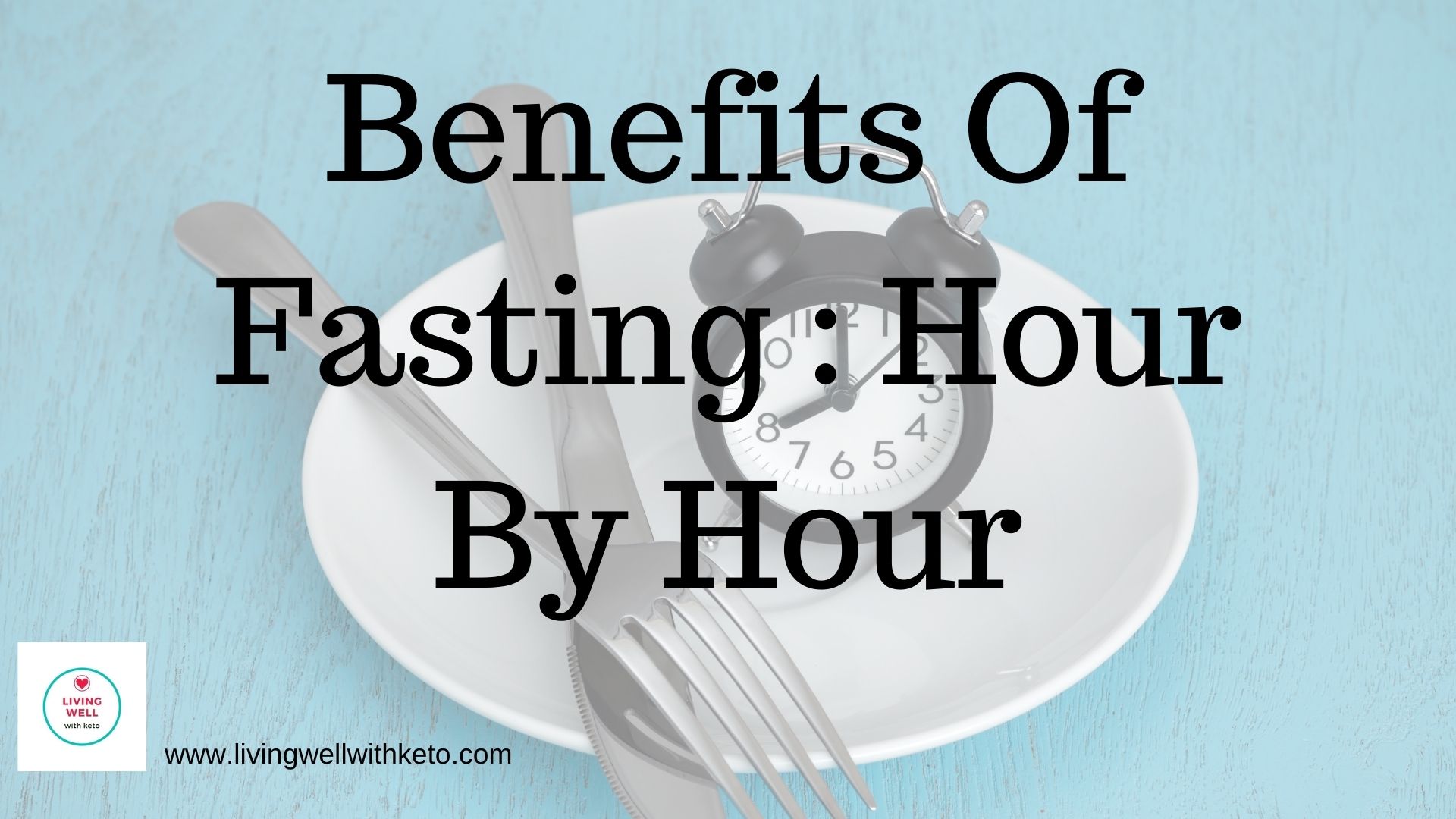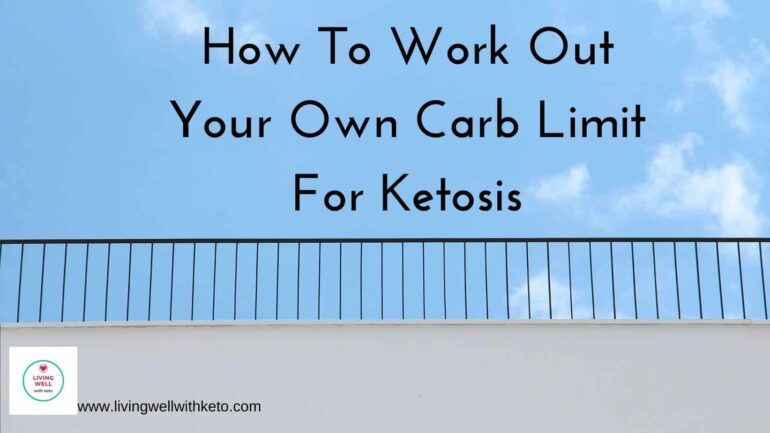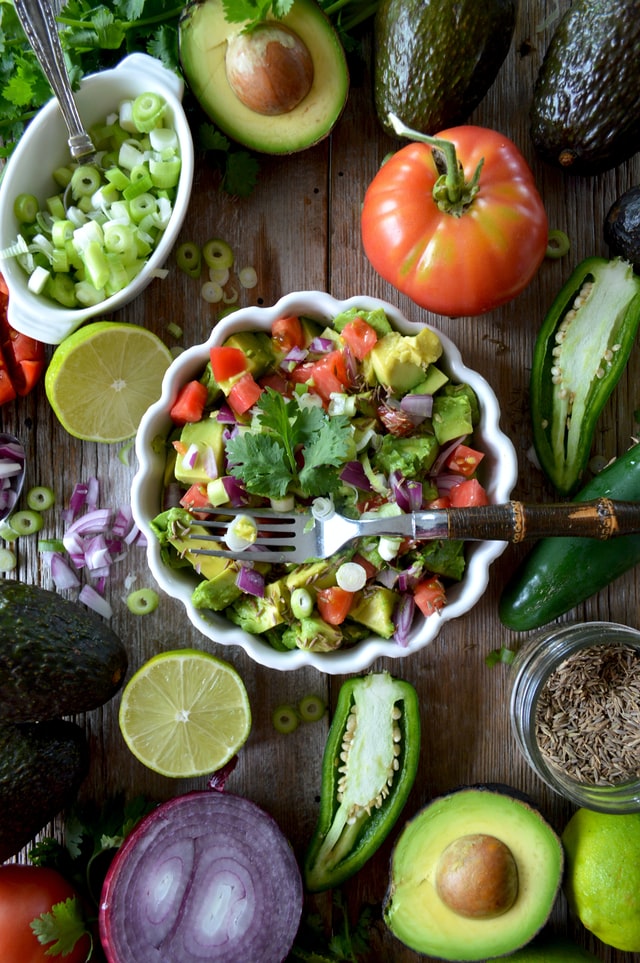Learn how to work out your own carb limit for ketosis: You’ll find that you can allow yourself a lot more than the often stated requirement of 20g net carbs or less each day.
The keto diet has an amazing ability to help you reach your weight loss and health goals.
However, in common with all eating plans, it does come with some do’s and don’ts.
This is a diet that requires that your daily food intake comes from 70% fat, 25% protein and just 5% from carbohydrates.
Importantly, this carb limit may seem low, and for some people, it can be increased. This will give far more flexibility and enjoyment on your keto diet.
When following keto, the 5% carb limit normally works out at 20g net carbs each day.
This is a level that’s been set so that almost everyone can reach the desired state of ketosis.
However, there is no magic number of carbs below which you will trigger ketosis.
Thankfully, your own carb limit for ketosis may be a lot more generous.
Certainly, there are plenty of people who find that 20g net is enough carbs, and they are comfortable staying under this amount.
However, who wouldn’t enjoy a few more carbs and still be in ketosis?
If you’re like many people you’ll find 20g carbs to be restrictive. Chances are that you’d like to increase your daily carb allowance while still achieving all the benefits of being in ketosis.
What’s wrong with 20g net carbs each day?
There’s nothing wrong with this amount, although it has to be said that it’s an arbitrary amount.
By setting the limit at 20g net for each day, you’re guaranteed to reach ketosis.
This will take careful planning and tracking of your food. By doing this you’ll be able to reach all your macros.
Plus, yo’ll be able to take care of your micro nutrient needs at the same time.
To do this you’ll need to make sure that every mouthful of carbs that you eat is nutritionally dense.
There’s no wriggle room for wasting your carb allowance on keto friendly cakes.
However, one of these specialist treats certainly won’t hurt from time to time.
Just make sure that if you are doing this regularly you still have carbs left to use for the consumption of healthy foods.
These are the foods that will provide all the minerals and vitamins that you need.
For more information about making sure that you’re choosing the right sort of carbs read:
How many carbs can you have on a keto diet (making sure you’re eating the right ones)
What happens if you go over the 20g net carb per day allowance?
For some people, eating more than 20g net carbs a day will prevent them from going into ketosis.
If this is you, going over 20g could even knock you out of ketosis if you’re already in that state.
This means that you’ll no longer be burning fat for fuel. Your body will revert back to using glucose for your daily energy needs.
This will stall your weight loss. It will also prevent you benefiting from all the amazing health benefits of the keto diet.
For this reason, keto dieters are encouraged to carefully monitor their carb intake.
Never guess your carb limit:
Taking a guess can very often cause you to go over. It’s easier to eat more than 20g net carbs than you might think.
Is there some wriggle room with the 20g net carb limit?
The good news is that very often you will find that your own individual carb limit is higher than the suggested 20g limit.
If you’re very keto adapted and can switch to burning fat easily, you will be able to increase your daily carb allowance and still stay in ketosis.
This limit was set as a general limit for most people.
As an individual, you may be able to eat a lot more than 20g without missing out on all the health benefits of ketosis.
Are certain people more likely to be able to eat extra carbs?
There are certain people who seem more tolerant of carbs than others.
These are people who have been on the keto diet for a long time. They’re well adapted to burning fat for fuel .
These seasoned keto dieters can very often eat more carbs and still stay in ketosis.
Generally, they’ve been on a strict keto diet for between 3 -6 months.
Importantly, your individual carb allowance will also depend on your body type, weight and exercise levels.
On top of that, your carb tolerance will vary from day to day, depending on activity level and stress levels.
The influence of genes
There’s a lot of evidence that some people are much more able to deal with carbs than others.
It’s seems that they are fortunate enough to be born with the right genes.
As an example, the Inuit people ate a naturally low carb diet. They more or less lived on fish and meat.
Only very rarely did a carbohydrate get consumed.
Despite this, they seldom experienced ketosis due to the fact that they have a gene variant that gets in the way of producing ketones.
Fortunately for them, they can still burn fat for enegy. They’re completely fat burning adapted.
Exercise
During exercise your muscles use glycogen, with more glycogen being used the more intense that exercise is.
It’s bee found that HIIT training is especially good at burning through your glycogen stores.
There is a lot of evidence that proves that after a work out, you’ll be able to consume extra carbs and stay in ketosis.
This is due to the fact that the carbs will work towards replenishing the glucose in your muscles.
This means that you’ll be able to enjoy some extra carbs with your post work out meal while staying in ketosis.
You’ll need to remember that it isn’t possible to measure exactly how much glycogen each work out will have used.
Due to this, finding out how much you can increase your carbs is going to be a trial and error plan – unless you track your level of ketosis.
What reduces your carb tolerance?
Stress is one of the most important influences on your body’s ability to process carbs.
When the body is stressed it produces the hormone Cortisol.
This is important for everyone but its especially important for keto dieters.
This is due to the ability of Cortisol to raise blood/glucose levels. It this happens too often you could become glucose insensitive.
These factors combine to give you more available glucose than normal and will inhibit or stop ketosis from happening.
Of course, any form of stress can cause the production of too much cortisol.
Stress from worry, work and social events will all cause a raise in cortisol.
What is less known is that a few of the “healthy” activities can also cause cortisol levels to get too high.
Too much exercise, and pushing yourself too hard at work or with your goals can also have this effect.
As with most things in life, more is not necessarily better. Moderation is often the way to go.
Aim to feel as relaxed as much as possible. If this is difficult for you consider yoga, meditation or simply going for a walk.
In a calm and steady state it is possible that you will be able to tolerate more carbs and stay within ketosis.
What can be done to increase carb tolerance and stay in ketosis?
There are several things that you can do to maximize the amount of carbs that you can enjoy each day while still benefiting from ketosis.
- Exercise, especially HIIT, but don’t overdo this. Twice/three times a week is enough.
- Low intensity exercise such as going for a walk. This type of exercise is also important for enhancing fat burning as well as reducing your stress levels.
- Make sure that you’re getting adequate sleep. If you need more information about this read Natural sleep aids that work (and are backed by science)
- Stay with the keto diet at a low level of carbs for between 3 -6 months to get fully adapted to burning fat.
How to know that you’re still in ketosis when adjusting daily carb intake
As long as you are eating no more than 20g net carbs you can guarantee that you will be in ketosis within the first 3-5 days of starting the keto diet.
However, once you decide that you’d like to know your personal carb limit, you will be much less able to be sure that you’re in ketosis.
Some experienced keto dieters can “feel” when they are in ketosis or not.
Obviously, this is not the most reliable method and most of us would need to track our level of ketosis when attempting to add more carbs.
There are several ways of doing this, with varying levels of accuracy and cost.
Testing your urine using small strips is the most inexpensive method, and may be an option if you want to test your ketone levels several times a day.
However, they are the least accurate. As you become more keto adapted, your levels of ketones in your urine decreases, due to the fact that you are now able to use the ketones more efficiently.
This makes urine strips less able to reveal how well into ketosis you are. A less adapted person will have more ketones simply because they are not yet able to use them well.
Breath meters are more accurate, and once you’ve established your carb limit, these will be able to give you a reasonably accurate indication of how far into ketosis you are.
They are in the middle range of affordability.
Without a doubt, if it is within your budget, a blood/ketone meter will be your most accurate way of knowing if you’re in ketosis.
These machines will often measure glucose levels too.
This will help you discover your own reaction to different types of carbs.
By testing after a meal that contains more carbs than usual, you will be able to quickly see if you are able to tolerate the new carb level and still stay in ketosis.
There are many meters on the market, but there is a newcomer which is one of the best.
It’s entered the market at a great price point, making frequent testing much more affordable.
For more information read here.

This will bring you all the amazing weight loss and health benefits of this diet.
However, the good news is that you probably won’t always have to stay at the ultra low level of below 20g net of carbs each day.
Once you have been on the keto diet for a while (we recommend at least three months) you will be able to begin experimenting with your carb allowance.
By adding just a few extra carbs to your meals each day, and testing your ketone levels, you will soon be able to see just how high you can push your carbs without triggering an end to ketosis.
You can help to increase you carb tolerance by making sure that you are getting enough sleep, exercising and keeping your stress levels as low as possible.
This is not a quick process, but with some planning and determination you may well find that your own carb level will be a lot higher than 20g net.
This will make the keto diet both easier and more flexible, and you’ll be able to increase your intake of certain vegetables and fruits too.
By knowing your personal carb limit, you will be able to stay with the keto diet for it’s health benefits, even after you have reached all your weight loss goals.


How many carbs can you have on a keto diet (making sure you’re eating the right ones?
















